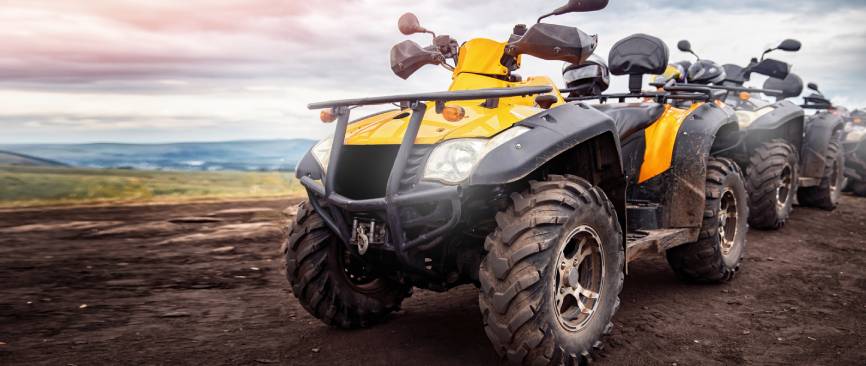
How To Choose the Right ATV Tire for Every Type of Terrain
Having the appropriate tires on your ATV is more than a matter of preference; it's a critical decision that impacts not only the performance of your vehicle but also your safety. With multiple options available, exploring the specific features of the right tire is crucial.
Whether your journeys take you through soft, shifting sands or over rugged, rock-strewn trails, the key is finding a tire that’s tailor-made for those conditions. Choosing the right ATV tire for every type of terrain will determine your experience and help ensure every outing is a memorable adventure.
Understanding Terrain Types
The main step in choosing the right ATV tire is understanding the characteristics and needs of each terrain type:
- Mud: Muddy conditions demand tires with wide, deep treads that can eject mud and maintain traction. Look for aggressive tread patterns that dig in instead of spinning uselessly.
- Sand: Sand tires, also called paddles, have a wide footprint. The rear paddles push against loose surfaces for better propulsion, and the front grooves steer more easily.
- Rock: Rocky terrains require tires with strong, durable construction and deep, well-spaced treads that grip uneven surfaces and resist punctures.
- Snow: Snow and ice need tires with a flexible compound that stays supple in cold temperatures for better grip, as well as deep treads and studs for traction.
- Trail: General trail riding tires are versatile and designed for varied conditions but have difficulties with extreme terrain. They have medium tread depth and durable construction.
Learning terrain specifications and getting your products from reliable ATV tire manufacturers will ensure your vehicle performs optimally, no matter the ground conditions. Following instructions and focusing on safety will deliver the best possible experience.
Tread Depth and Tire Size
Tire tread is the shape and arrangement of the grooves, blocks, and channels on the tire's surface, dictating how it interacts with the ground beneath it. Tread patterns influence everything from how your ATV handles in the rain to how it climbs a steep, rocky incline. Larger tires increase ground clearance, helping the vehicle overcome obstacles more easily. Wider tires provide more stability and traction in many conditions but can make steering more challenging.
Tire Pressure
Proper tire pressure is crucial for optimal performance. Lower pressure increases the tire's footprint for better traction in soft terrains like sand or mud. Higher pressure offers better fuel efficiency and faster speeds on hard-packed surfaces. Always refer to the manufacturer's recommendations for ideal tire pressure settings.
Choosing the right ATV tires requires a deep understanding of the terrain's specific demands, the tire's construction and features, and how these elements align with the ATV's design. By considering these factors, you're more likely to enjoy a safer, more enjoyable adventure across any landscape. The right tire not only improves performance but also enhances the overall driving experience.



